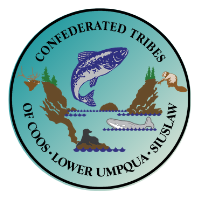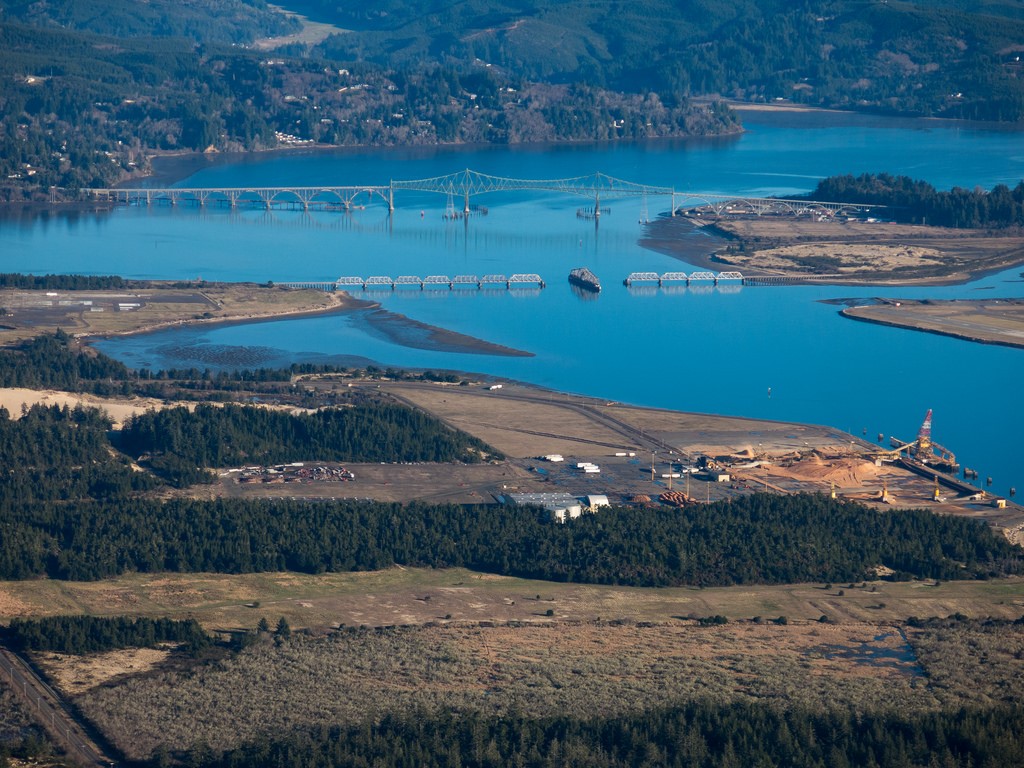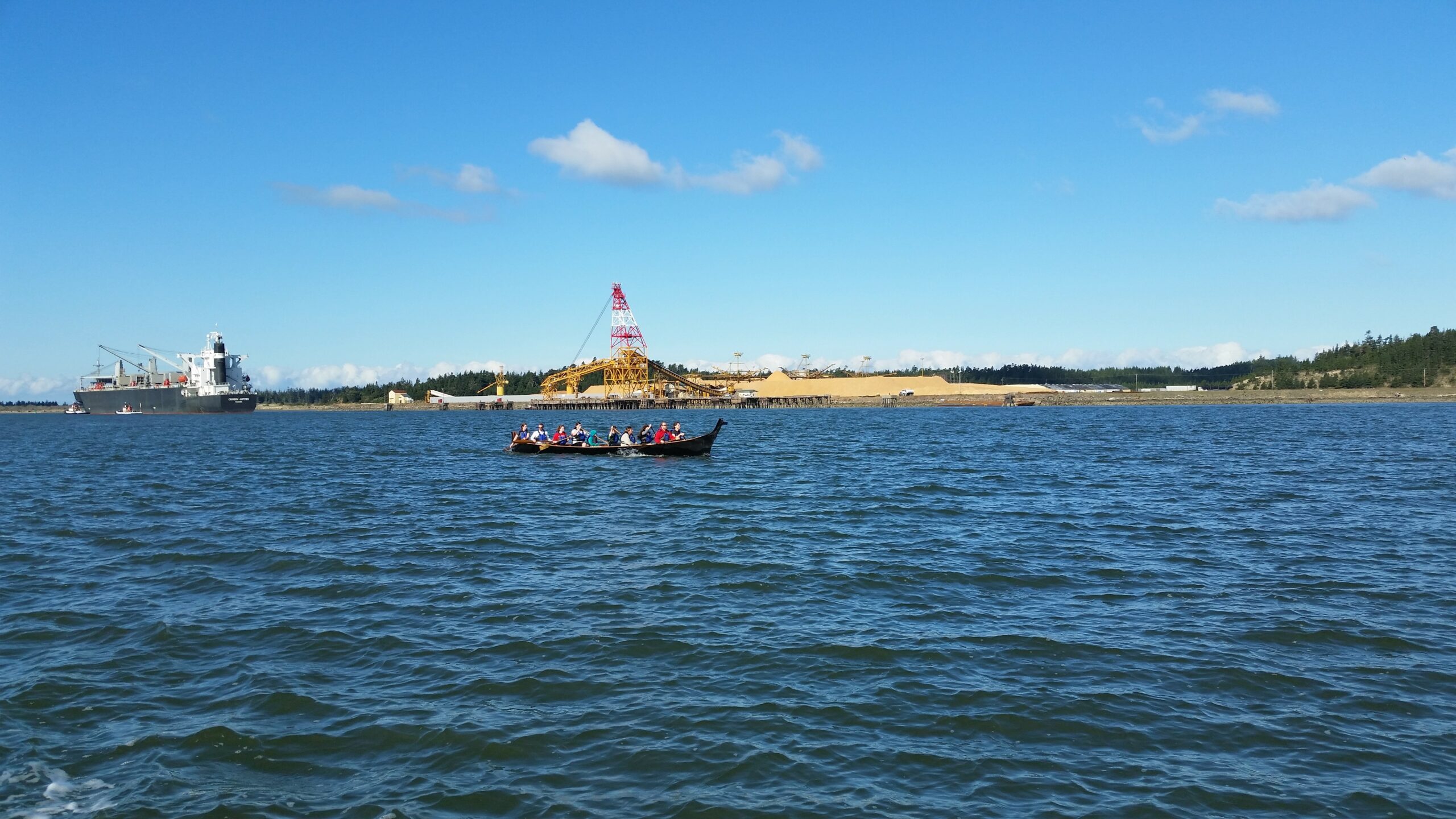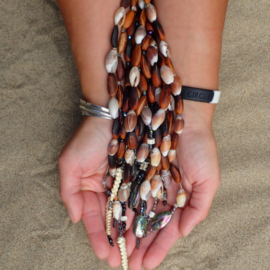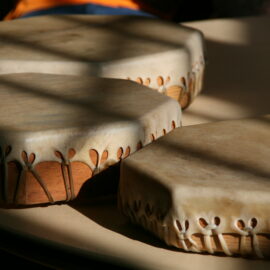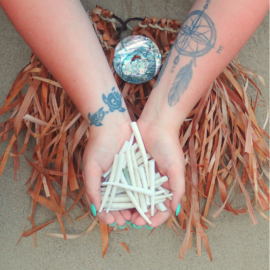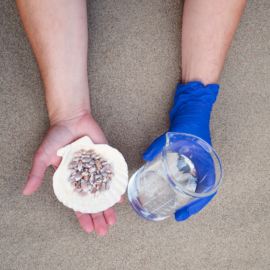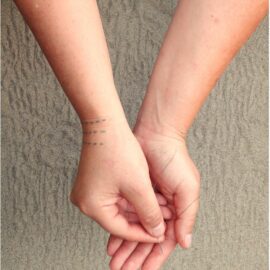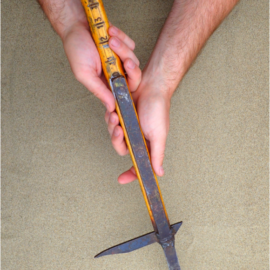TCP FAQ
Our Traditional Cultural Property (TCP) application to the National Register of Historic Places Frequently Asked Questions
Key Terms relevant to the Traditional Cultural Property Nomination
Cultural/Archaeological Resources: These can include plant gathering areas, shell middens, fish camps, sacred sites, fish weirs, and projectile points. Cultural resources can also be defined as physical evidence or place of past human activity: site, object, landscape, structure; or a site, structure, landscape, object or natural feature of significance to a group of people traditionally associated with it.
Archeological site: A place in which evidence of past activity is preserved and which has been, or may be, investigated using the discipline of archaeology and represents a part of the archaeological record. These include village sites, lithic scatter, shell middens, fish camps, and hearth features.
Contributing Features: Features that contribute to the significance of the property (associations with the cultural practices, traditions, beliefs, lifeways, arts, crafts, or social institutions of a living community). These features include cultural/archaeological resources, archaeological sites, and specific buildings owned by the Confederated Tribes of Coos, Lower Umpqua and Siuslaw Indians.
Non-contributing Features: Features that do not contribute to the significance of the property. These include residential buildings, commercial buildings, sheds, driveways, garages, gardens, roads, etc. Additionally resources listed on private lands where gathering is not permitted are not contributing. Our application makes no attempt to include resources that are not important to contributing Coos beliefs, history or cultural practice.
Shell midden: Mound or lens (thinner deposit) formed mainly by refuse shell, fish bones, broken tools. Middens are closely associated with village sites, camps and processing areas.
Viewshed: A viewshed is an area that is visible from a specific location. In the case of our TCP, the water. Accordingly, significant impacts to this TCP viewshed would require very large-scale development along the shoreline that would materially alter the ability to recognize an entire landscape feature like a hill, stream, or inlet.
Questions and Answers about what makes Q'alya ta Kukwis scichdii me a Traditional Cultural Property
What makes Q'alya ta Kukwis shichdii me a Traditional Cultural Property?
A “Traditional Cultural Property” TCP is a property that is eligible for inclusion in the National Register of Historic Places (“NRHP”) based on its associations with the cultural practices, traditions, beliefs, lifeways, arts, crafts, or social institutions of a living community. Generally, TCPs are rooted in a traditional community’s history and are important in maintaining the continuing cultural identity of the community. It is important to understand that this is a nomination for recognition of the area as a TCP as opposed to other recognition under the National Historic Preservation Act. Coos Bay and the contributing features of our TCP are central to many Coos cultural practices and beliefs that are still practiced today.
If this nomination goes through, will I lose the rights to my property? Will I lose the ability to develop and make full use of my private property?
Absolutely not. A TCP designation primarily impacts federally approved or funded projects. That said, Oregon, Coos County, and local laws do require local government to prepare a cultural resource inventory and to protect archeological, historic and cultural resources within Coos Bay, even if those resources are located on private property.
If the National Park Service approves the TCP nomination, would my home be subject to the same limitations as Buildings that are on the National Register?
No because homes are considered non-contributing features of the TCP.
Is my home a Contributing Feature to the Tribe’s nomination?
Homes are not Contributing Features to the TCP.
Will my property be subject to extra state and local government regulations?
No. That said, existing Oregon law prohibits destruction of archaeological sites or objects. ORS 358.920 provides that a “person may not excavate, injure, destroy or alter an archaeological site or object or remove an archaeological object located on public or private lands in Oregon unless that activity is authorized by a permit issued under ORS 390.235.” Moreover, Coos County, the Cities of North Bend and Coos Bay have local requirements that require protection of archeological, historic and cultural resources within Coos Bay.
Must I apply for a permit with the Tribe to replace my roof, windows, siding or any other cosmetic changes to my home? When I want to make changes to my property, will I be required to give notice to the Tribe and will the Tribe be able to object to what I want to do to my property?
A TCP listing does not confer jurisdiction or property rights on the Tribe. Accordingly, no permits will be required from the Tribe. Independent from the TCP nomination process, under County laws the Tribe reviews local building permits within unincorporated Coos Bay to ensure impacts to archaeological, historic and cultural resources are minimized.
Will I have to disclose to potential buyers of my property that they are purchasing a “historic property”?
There would be no disclosure requirement for lands that fall within a TCP boundary. Additionally, it should be noted that currently Oregon and local law generally do not require sellers to disclose archaeological or cultural sites to buyers.
How do I find out if there are archaeological sites or objects on my property?
Contact the State Historic Preservation Office and/or the Tribe. The Tribe is willing to provide professional archaeologists to work with all landowners, at no cost.
Is this nomination bad for the local economy? Will this affect home prices in our area?
This designation will enhance, not detract from, our local economy. 1 Studies indicate that properties within historic districts appreciate at rates greater than the local market overall as well as faster than similar, non-designated neighborhoods. Moreover, analysis shows that historic districts are also less vulnerable to market volatility from interest rate fluctuations and economic downturns.
Why is the Tribe seeking to have Q'alya ta Kukwis shichdii me listed as a TCP?
To require that federal agencies consider impacts to Contributing Resources before engaging in activities or issuing permits for activities within the TCP boundary area. Much like the National Environmental Policy Act, a TCP listing does not compel a particular result, but instead requires federal agencies to make informed decisions regarding potential impacts to cultural resources. Over the years, the Tribe has been lost many first foods or resources important to perpetuating our cultural practices. The federal government has a responsibility honor their trust responsibility to tribes. The Tribe has been frustrated by the refusal of certain federal agencies to even consider impacts to these resources prior to issuing permits or authorizations.
Why now? Why is the Tribe trying to designate Coos Bay now, after all of this time?
Some have suggested that our TCP nomination effort is a response to the Jordan Cove LNG and Pacific Connector Pipeline projects (collectively the “Jordan Cove LNG Project”), but that is not the case. The TCP nomination efforts instead arise from our Tribal Constitution, which states that the Tribal Government is established to perpetuate our unique tribal identify and to promote and protect that identity. In light of our Constitutional obligations, we must think about all federally permitted projects within Coos Bay – and how they may impact resources important to our unique cultural identity. Moreover, the Tribe has a Cultural Resources Protection Agreement (“CRPA”) with the Jordan Cove Energy Project applicant – Pembina - and we are optimistic that compliance with this agreement will protect our Cultural Resources within Coos Bay.
Would the Tribe receive benefits from the Federal Government if the TCP nomination is approved?
No, except for the “benefit” of requiring federal agencies to consider impacts to TCP Contributing Features. However, a TCP listing for Coos Bay would open the door for local counties, cities, and others to receive planning and other grants related to the designation. For example, the National Park Services offers a number of TCP-related grants. The Tribe has indicated to its local government partners that it would welcome the opportunity to support any funding opportunities that would assist in the implementation of the TCP designation.
Have similar TCPs nominations been approved anywhere else to protect resources important to tribal cultural identity?
There are many TCPs across the Nation that recognize the importance of cultural history to Tribes, these include:
- Bassett Grove Ceremonial Grounds, Oklahoma: The Grounds have been the site of specific ceremonies conducted by the Seneca and Cayuga Indians since 1832.
- Kuchamaa (Tecate Peak), California: A sacred mountain associated with the Kumeyaay Indians. The mountain peak marks a significant location for the acquisition of knowledge and power by shamans and remains a site of important rituals and rites.
- Nantucket Sound, Massachusetts: The Sound is an essential component of a larger traditional cultural landscape important to the ongoing practices, beliefs, and traditions of the Wampanoag tribes of Cape Cod. The TCP includes archeological and historic sites associated with the ongoing practices and traditions of the local tribes.
Why did the Tribe not have to submit this application to the Coos County Planning Committee for approval prior to submitting to SHPO?
The application is for designation under federal law – the National Historic Preservation Act. This requires review and approval by the National Park Service, not local government. However, the Tribe has met with local government and has offered to enter into Memorandum of Agreements (“MOAs”) to address any issues that may arise under state, Coos County or local law from listing the TCP on the National Register.
Is this nomination a way to streamline the process of becoming an officially recognized tribe by the federal government?
No. The Tribe is already a federally recognized tribal government. On October 17, 1984, as a result of a long moral, legal and legislative battle, President Ronald Reagan restored the Tribes to federal recognition by signing Public Law 98-481.
Why is the TCP necessary to the Tribe if Oregon Law-“Goal 5: Natural Resources, Scenic, and Historic Areas and Open Spaces”, as well as the Coos Bay Estuary Management Plan already exist within the bay to protect cultural and natural resources?
Goal 5 and other local and state cultural resource laws generally do not apply to actions by federal agencies. Designation of a TCP is governed by the National Historic Preservation Act, which requires federal agencies to consult with the Tribe when a Federal activity may affect a TCP. The law mandates consultation to determine impacts, but it does not mandate that an action not occur as a result of those impacts. At their discretion, federal agencies may develop and implement a preservation program for a TCP.
Does a TCP nomination empower the Tribe via the National Historic Preservation Act to instigate legal action against non-tribal members and public entities?
The National Historic Preservation Act would allow the Tribe to bring a legal action against a federal agency if it failed to consult about the impacts of its actions on the TCP, but it does not provide any right to file an action against any state or local government or individual. Moreover, the law mandates consultation occurs with the federal agency to determine impacts, but it does not mandate that an action not occur as a result of those impacts.
If the TCP is put on the register, what will be the impact to industrial, commercial & recreational use of the bay?
If a new industrial, commercial, or recreation use of the Bay requires federal approval or a federal permit, uses federal funds, or occurs on federal land, the federal agency involved must consult with the Tribe to determine impacts of the new proposal on the TCP, but it does not mandate that an action not occur as a result of those impacts. If no federal agencies are involved, there are existing local and state laws that are already in place regardless of the TCP that may apply. The Coos Bay Estuary Management Plan Policy # 18, which mandates “review of all development proposals involving a cultural, archaeological or historical site, to determine whether the project as proposed would protect the cultural, archaeological and historical values of the site.” Likewise, state law, ORS 358.920, already requires protection of archeological sites, stating that a “person may not excavate, injure, destroy or alter an archaeological site or object or remove an archaeological object located on public or private lands in Oregon unless that activity is authorized by a permit issued under ORS 390.235.”
Quotes from Tribal Council
CTCLUSI Leadership Quotes in response to questions from Jillian Ward, reporter for the World.
Mark Ingersoll, Chairman of the Tribal Council for the Confederated Tribes of the Coos, Lower Umpqua and Suislaw Indians (“CTCLUSI”).
Warren Brainard, CTCLUSI Chief.
“While we began preparing the application to place Jordan Cove on the National Register of Historic Places back in 2015. However, that decision was an outgrowth of prior Tribal Council resolutions enacted in 2006 and 2015, which designated the Jordan Cove area as a Traditional Cultural Property under the laws of the Tribe. In many ways, a National Registry listing would federalize this Tribal designation by making federal agencies consider impacts to cultural resources within Coos Bay prior to engaging in activities or issuing permits. It is important to point out that the Coos Bay Estuary Management Plan already requires the evaluation of impacts to cultural resources within Coos Bay prior to issuing local and county permits. In this sense, a National Registry designation would require federal agencies to do what private citizens and local governments have done since the Bay Estuary Management Plan was enacted in the early 80’s – consider impacts to cultural resources before issuing permits.” Chairman Mark Ingersoll
“We don’t think a National Registry listing for Coos Bay would affect our local businesses in Coos Bay beyond what we already do under the Coos Bay Estuary Management Plan. We are proud to be a part of a community that requires consideration of impacts to cultural and historic resources prior to engaging in activities that might impact those resources.” Chief Warren Brainard
“A National Registry listing would require assessment of impacts to critical gathering and harvest areas" Chairman Mark Ingersoll
“Our efforts are a response to the Tribal Constitution, which states that the Tribal Government is established to perpetuate our unique tribal identify and to promote and protect that identity. The resources we seek to protect through this listing are central to the Coos tribe’s identity.” Chief Warren Brainard
“As an example, back in 2016 when FERC denied the Jordan Cove application, we determined to continue on with our listing efforts, because this listing is about all federally permitted projects and federal activities within Coos Bay – not just the Jordan Cove LNG.” Chairman Mark Ingersoll
“We have a Cultural Resources Protection Agreement with Pembina, and we are optimistic that compliance with this agreement will protect our cultural resources within Coos Bay. At the same time, in light of our Constitutional obligations, we must think about all federally permitted projects within Coos Bay, which is why this listing effort is so important to us.” Chief Warren Brainard
